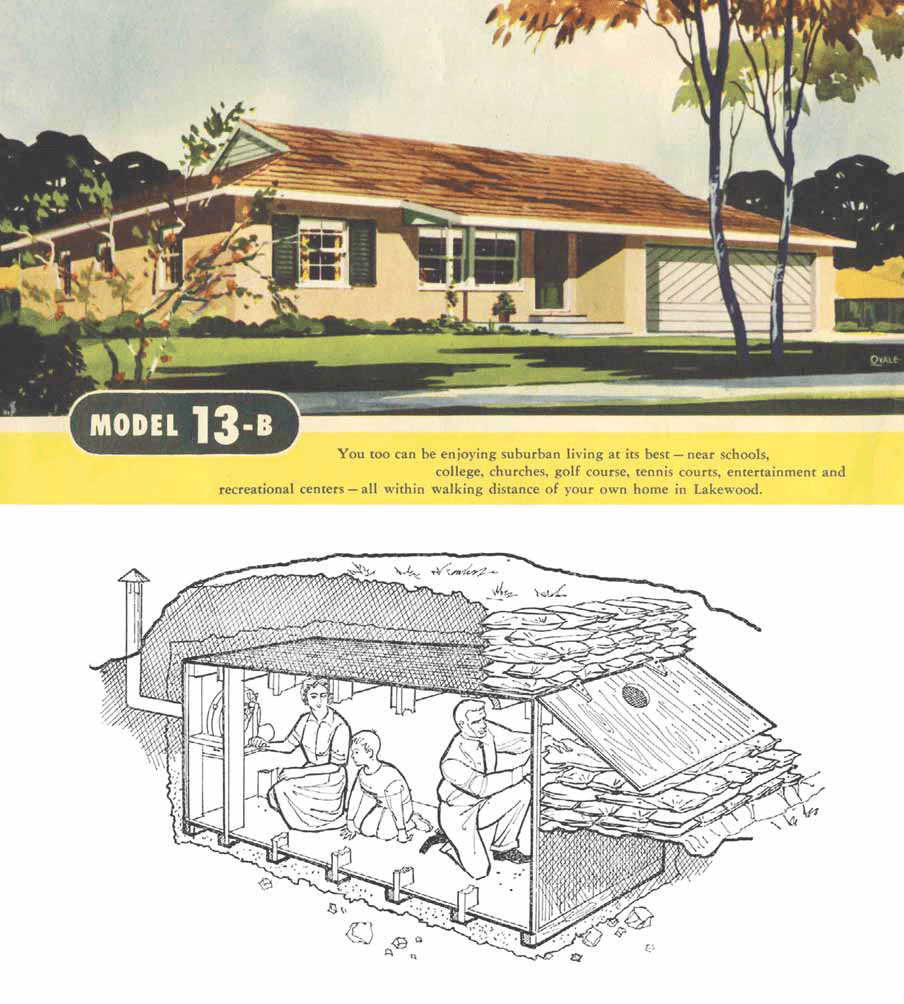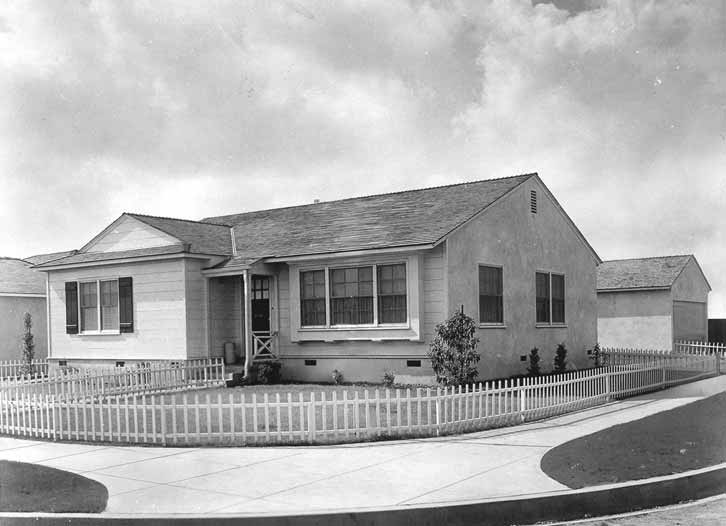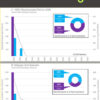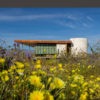
Home
We were housed in Lakewood. We were sheltered. But we didn’t have a home yet. In this sudden place—sudden in the way California generally has been but even more spectacularly sudden here—17,500 houses were built and sold in just 33 months between the end of 1949 and the middle of 1953.
Before we came here, some of our parents had been homeless for years, the result of the agricultural depression begun in the early 1920s or because of the Great Depression and the Dust Bowl diaspora of Okies and Arkies in the 1930s or the dislocations of war and its housing shortages through the end of the 1940s. Coming to Lakewood, our parents thought they had found a home, but they hadn’t. Some of our parents stayed only long enough to imagine that home was somewhere else and then moved on. Home eluded them. (It may elude them still, as it does so many of us.)
The idea of home in Lakewood was sold with a superb sales pitch. When you bought a house you were buying a piece of the big newness that the 20th century was going to deliver to everyone’s doorstep, even yours. A van would pull up, and tomorrow would be rolled into your living room. Most of my neighbors, while accepting this optimistic premise, found that some assembly of the future would be required.
Mothers
In 1953, a reporter for Harper’s Magazine asked young wives living in my suburb what they missed most. The women usually replied, “My mother.”
The loss extended to parents generally. Motherless moms and fatherless dads, with advice books and parenting magazines in hand, attempted to raise us to be a better, healthier generation. Their parents, located in what everyone called “back East,” were distant, tinny voices on a party-line telephone, helpless to spoil or correct.

Some of our whiteness
So quickly had the building been that in 1950 almost no one lived here, but in 1960 there were nearly 70,000 of us. Of course, we were nearly all Caucasian (as we were called then). The Census that year counted seven people in Lakewood who admitted they were black.
Nevertheless, our whiteness wasn’t pure. Coming to southern California, whatever else it meant, introduced a tinge of otherness, something that might lead to greater complexity. There were Jews, after all, living in surprisingly large numbers throughout Lakewood (whose Jewish developers, unlike Bill Levitt, omitted the covenant that restricted ownership to Christians). Jews had become white only recently and provisionally, as had Mexican Americans. They lived here, too (but they had always been indigenous, in the background). Our whiteness had holes through which even Filipinos and Japanese Americans slipped.

The abundant land
I lived among families on my block who knew a meal only as the opposite of going hungry, with husbands in their 30s who still insisted on eating poorly because they had been fed poorly for most of their lives. Meals reflected what they stubbornly held on to. If they ate to remember, many of the memories were of loss.
In Lakewood—“The City of Tomorrow, Today!”—the future of food hadn’t arrived yet. Shopping was mostly done on foot, since most housewives either couldn’t drive or didn’t have a car. The Helm’s Bakery truck, with its smoothly sliding, glossy wood drawers, came by every day. And so did a guy who had converted a bus with shelves and a cooler to bring milk, eggs, and cigarettes to the carless.
The Boys Market at the distant end of my block had long aisles of packaged and canned goods, but the fresh vegetable counter still followed the seasons. Heads of iceberg lettuce—the only kind available—dwindled in winter. Corn on the cob only arrived in July. Some grocery stores showcased an aisle of frozen food, but the Coldspot refrigerator at home had only enough room in its freezer compartment for one or two rectangular blocks of peas.
As a percentage of family income, food in the 1950s was comparatively expensive. But on a $100-a-week paycheck you could still feed a family. The results were hardly memorable if all you knew was Wonder Bread and margarine, a Sunday roast cooked dark and hard, watery string beans, plenty of mashed potatoes, and Jell-O for desert.
We were fed in Lakewood, but many of us were not sustained very well, with scraps half-remembered from a high school home ec course and what TV commercials told our mothers they could do with Cheeze Whiz. We hardly noticed, but all around us was extravagant California. Backyards in Lakewood delivered apricots, plums, peaches, pomegranates, nectarines, tangelos, guavas, and tangerines with casual overabundance. The winey smell of fallen fruit in summer was overwhelming.

Our roots
The children of my youth were a newly made tribe. A typical block with 36 houses might have as many as 80 boys and girls under the age of 15. Out of necessity, we shared the task of civilizing each other, stepwise from oldest to youngest. Perhaps we could have done better.
We ate the same store-bought food (as my neighbors from Oklahoma called it). Boys wore the same after-school uniform of teeshirts and denim jeans (my neighbors from New Jersey called them dungarees). We made rough accommodations with divergent folkways, adopting a few, abandoning most of the baggage our parents carried. For us, the gridded streets were unbounded by class or place of origin. Lakewood was one block of houses repeated 500 times.

The tribe’s lawgivers were Sheriff John and Engineer Bill and the “Miss Frances” of Ding Dong School. Our epic poets were the journeymen directors of the previous decade’s B pictures shown on local television. From them, we made up endless games involving cowboys and Indians, cops and robbers, and the army and Germans (because the war still lingered in Lakewood; it still lingers).
Our parents and their parents had been Poles or Lithuanians or Irish or Dutch or Swedish or something else with old grievances and older faiths and a long history of brokenness. Their children weren’t anything. We were the homogenous, the brand name, the nationally advertised, the Californian, and we were unbroken then.
Innocence
In 1961, the federal Office of Civil and Defense Mobilization published “The Family Fallout Shelter”—a homeowner’s guide to atomic survival, printed on newsprint and costing 10 cents. The OCDM advised that a contractor-built shelter would cost about $1,500. (That was 10 percent of the cost of a house in Lakewood.) If $1,500 was too much, dad could build a less adequate shelter in the basement, using plans in the OCDM guide, for about $500. Only no southern California tract house has a basement. A pre-fab shelter dealer in Downey, across the street from the Rockwell Aviation plant on Lakewood Boulevard, sold fiberglass shelters for burial in the backyard. I don’t know how much they cost.
My parents never considered buying one, nor did any of our neighbors. We knew that we lived at “ground zero,” surrounded by Douglas Aircraft, Rockwell International, a Nike missile battery, and the ports of Long Beach and Los Angeles. We knew that the thermal pulse from a single 20-megaton fusion bomb could set fire to everything inside a 10-mile-wide circle.
In 1962, during the week of the Cuban missile crisis, my parents stood at the kitchen sink after dinner, washing up and listening to the news on the TV. They turned to my brother and me and told us what we should do, if something happened. My brother and I—he was 16 and I was 14—should not try to come home from our Catholic high school. We should go to the school chapel to wait. My parents said they would come for us there.
My parents mouthed these lies, and my brother and I quietly repeated them. We knew that our parents would not come for us, and that the school chapel was a fit place in which to die.
Our way
When Lakewood was brand new, no one knew what would happen when tens of thousands of working-class husbands and wives—so young and inexperienced—were thrown together and expected to make a fit place to live. They had no instruction manual.
Mostly, they found enough space to reinvent themselves. Later, some of them learned that the work of reinvention had gone badly. Some of them, the men particularly, gave up what little adolescence they had kept. That loss made them seem remote to their sons and daughters, for whom everything new and disorienting was perfectly ordinary.
Tomorrow’s city was difficult for all of us to map, but my neighbors gradually filled in what they lacked as ordinary people who had taken up the protracted burdens of living together. By necessity, they found a way. And most came to understand what they had gained and lost by owning a small house on a small lot in a neighborhood connected to more square miles of exactly the same. More men than just my father have told me that living here gave them a life made whole and habits that did not make them ashamed.
D. J. Waldie is the author of Holy Land: a Suburban Memoir, which is about his hometown of Lakewood, California—a planned, post-World War II suburban community.
Originally published 4th quarter 2010, in arcCA 10.4, “Faith & Loss.”





